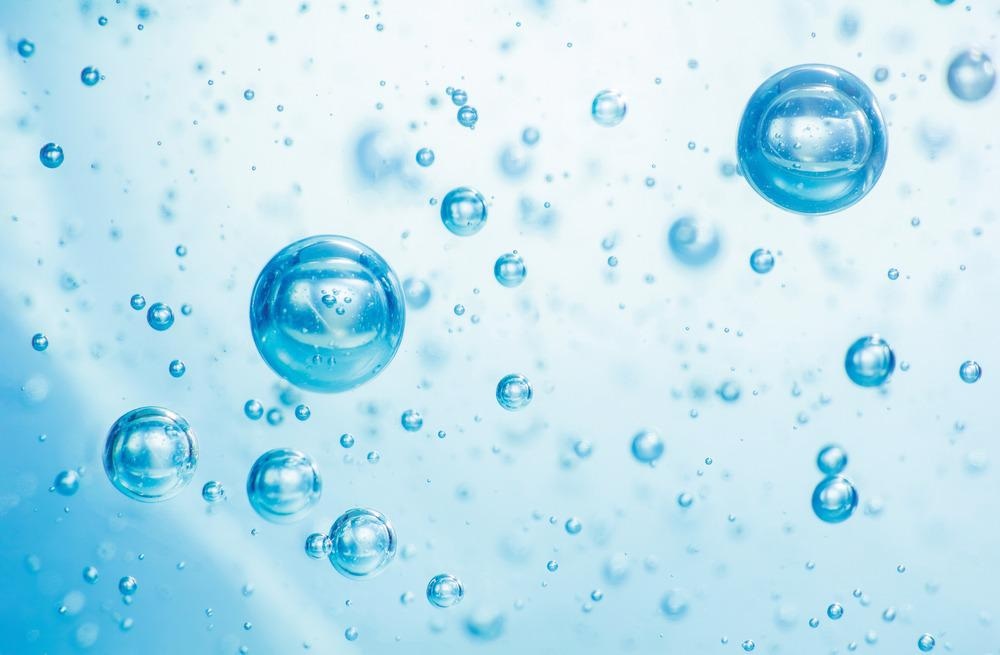A straightforward approach for developing an eco-friendly and cost-effective solar evaporator consisting of customizable geometry was established by incorporating carbon nanotubes (CNTs) in a sodium alginate (SA) hydrogel matrix in new research from Science of The Total Environment.

Study: Biomass hydrogels combined with carbon nanotubes for water purification via efficient and continuous solar-driven steam generation. Image Credit: Meta.K/Shutterstock.com
The Pressing Need for Effective Water Treatment
Freshwater is critical to human life, social advancement, and economic growth. The freshwater shortage is a pressing issue on a global scale, with nearly 58 percent of the global population are suffering from a water deficiency.
Sewage contamination is becoming an increasingly significant issue. In their manufacturing operations, several industries generate enormous volumes of organic sewage with large salt content. If not handled properly, it may pose a threat to human welfare and surrounding ecosystems.
Different water treatment technologies, such as osmosis treatment, enhanced oxidation, biological treatment, and adsorptive approaches, have been researched for effective water contamination treatment and for obtaining clean water.
However, the application of these techniques has substantial geographic and economic constraints, particularly in remote villages or inaccessible regions. In these areas, treatment technologies are often not viable due to substantial energy usage, costly installation, maintenance, and operation. Thus, it is important to build effective, inexpensive water treatment and contaminant removal technologies to provide fresh sources.
Solar Vapor Generation Could be the Key
Solar vapor commercialized generation, an economical, sustainable technique of improving the quality of water and producing clean water from saltwater or sewerage by utilizing solar power as the power source, has significant industrialization prospects and is a viable, eco-friendly water purifying technique.
Improving evaporating efficiency has always been seen as critical to developing and implementing solar-powered evaporating technologies.
A perfect evaporating material should have strong photothermal converting capability, hydrophilic nature and interior porosity for continual quick water supply, as well as low expenditures and good reusability.
Role of Carbon Nanotubes
Owing to their large specific area, excellent mechanical robustness, lack of secondary environmental pollution, remarkable broadband photo-absorption capabilities, and low expenditures, carbon nanotubes (CNTs) have been extensively employed for low-temperature (sub-100°C) solar collection. Carbon nanotubes are employed as photothermal transformation substances, and several solar evaporator designs have been developed to date.
Hydrogels – The Polymers that can Capture Water
Hydrogels are 3D cross-linked frameworks of polymeric hydrophile materials that may collect and store a considerable quantity of H2O via electrostatic interaction or hydrogen bonding. Hydrophilic groups form hydrogen bonding and intermolecular interactions with water resulting in a reduced vaporization enthalpy.
Additional operational elements can be readily added to the hydrogel matrix and water transportation. Morphological manipulation could effectively manage heat shielding in bulk hydrogels rendering them prospective materials. Based on their mode of development, hydrogel matrices may be natural or synthetic.
Biological hydrogels generated from organic polymers, like peptides, outperform synthesized hydrogels in terms of abundance, cost-effectiveness, and environmental friendliness.
Sodium alginate (SA) consists of various carboxyl groups in its polymeric chains owing to the fact that it is an organic biopolymer harvested from sargassum or commercially from brown algae. These groups can be conveniently integrated by Ca2+ cross-linking to create a continuous hydrogel system, allowing for the large-scale production of highly efficient and inexpensive solar evaporators.
Important Findings of the Study
In conclusion, a novel form of ecologically viable solar evaporator based on organically derived hydrogel was developed. The CSG with a SA concentration of 4 wt.% and a CNT level of 0.05 wt.% presented the best thermal efficiency.
The ability of CSG to effectively desalinate saltwater by evaporation with excellent stability and reliability, with a removal efficiency of more than 99.3 percent of Ca2+, K+, Mg2+, and Na+ in seawater, deemed it very useful. A stabilized evaporation rate of 1.565 kg m-2 h-1 after 15 sessions of evaporation in a 3.5 wt percent NaCl solution is obtainable. The CSG evaporation mechanism also performed well in the operational treatment of contaminated water as well as natural dye effluent.
This research presents a straightforward, pragmatic, and cost-effective approach to creating innovative hydrogel solar evaporators. Large-scale CSGs for distillation and water treatment can be constructed by altering the size of the PUs, using thermal energy to execute stable and efficient saltwater purification treatment and hence has a wide range of applications.
Reference
Jiang, Y., An, N. et al. (2022). Biomass hydrogels combined with carbon nanotubes for water purification via efficient and continuous solar-driven steam generation. Science of the Total Environment. Available at: https://doi.org/10.1016/j.scitotenv.2022.155757
Disclaimer: The views expressed here are those of the author expressed in their private capacity and do not necessarily represent the views of AZoM.com Limited T/A AZoNetwork the owner and operator of this website. This disclaimer forms part of the Terms and conditions of use of this website.